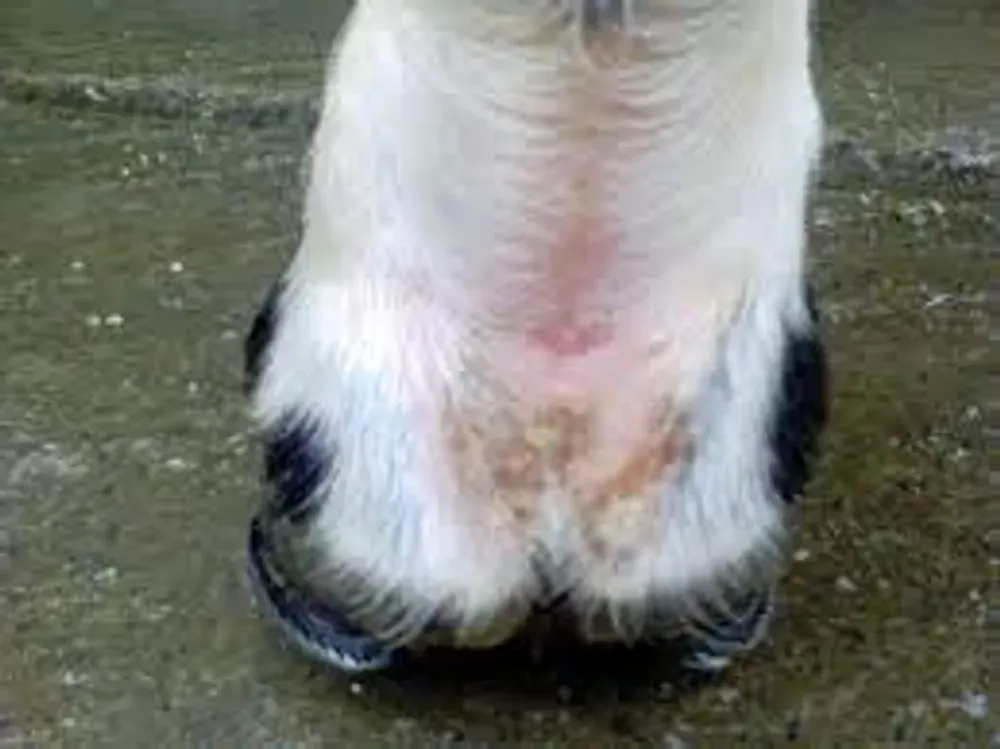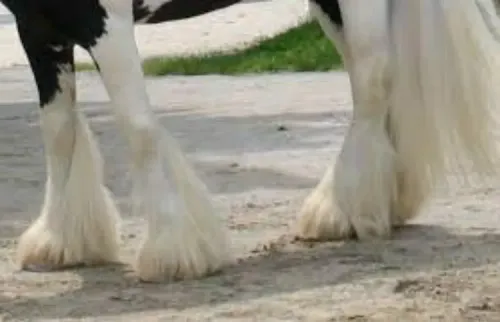
Table of Contents
Introduction
Winter brings unique challenges for horse owners and Equine Mud Fever is a condition to be avoided. This condition is also called greasy heel, cracked heel and pastern dermatitis and it is more common on the hind limbs. Uncover the reasons behind this common winter issue and learn practical tips on prevention and effective treatment.
What is Equine Mud Fever?
Equine Mud Fever is a common skin condition affecting horses. It is primarily caused by prolonged exposure to wet and/or muddy conditions. that permit a bacterial or fungal skin infection. Mud fever causes discomfort, and lameness, and if left untreated complications can develop. There are different causes of mud fever and the specific cause must be understood so that prevention strategies are effective. but first off, how will you identify equine mud fever?
What are the Signs of Mud Fever?
Mud fever is easily identified and is mainly found on the horse's pasterns and heel bulbs although it can spread up the legs as far as the knee or hock. In established cases, the skin is crusty with matted hair caused by an oily discharge between the skin and the crusty area. The skin beneath the crusty area is sore and inflamed. Eventually, the hair is lost and the skin can split open where there are skin folds to cause very sore areas. Heat and swelling in the affected area are then very noticeable and the poor horse will react to the area being touched and may be lame. Eventually, the lesions will ooze a white puss and the whole limb will become swollen.
However, the emerging signs of mud fever may go unnoticed unless the horse's lower limbs are inspected daily. The condition is more common on horses with feathered legs where the condition may be unnoticed for longer, permitting the infection to become well-established and more difficult to eradicate. These early signs start as small raised lumps on the pastern or heel bulb area. Over a few days, these will become more raised so that they can be scratched off as a hair tuft to reveal small areas of skin.
What Conditions Causes My Horse to Get Mud Fever?
Dermatophilus Congolensis as well as other bacteria and fungi causes mud fever. All horses naturally have these bacteria and fungi living on their skin. However, if the skin is damaged or weakened then these microorganisms can invade deeper skin layers. This causes mud fever. Here are the common situations where these microorganisms can invade through small scratches, abrasions and general waterlogging of the skin around the horse's heel and pastern areas.
- Turning your horse out on wet and muddy fields.
- You are continually washing the mud off your horse's legs in winter, and this removes natural oils and waterlogs skin.
- Frequently hosing your horse's lower limb because they have soft tissue damage. as the waterlogging breaks down the integrity of the skin and permits the development of mud fever.
- Leg mites that cause constant rubbing and self-trauma permit mud fever to develop.
- Working your horse in sandy conditions causes small abrasions and this can result in mud fever..

This horse has mud fever in the pastern area where it is called pastern dermatitis.
Mud fever can spread to the horses body!
Yes, some horses are severely affected by mud fever which spreads and affects other parts of the body. In these cases, your vet will prescribe systemic antibiotics to address the bacterial infection.
How Do I Stop My Horse Getting Mud Fever?
- Some horses are more prone to mud fever than others, and occasionally well-intended equine care strategies predispose a horse to developing mud fever. The best thing is to provide well-drained turnout paddocks without poaching around feeding and gateway areas. Light soils that drain well are the best, particularly limestone, sandstone and chalk soils. While heavy clay soils don't drain well and are easily poached.
- Do not turn your horse out 24/7 on muddy paddocks as his limbs cannot dry off. Instead, stable him overnight on a good clean bed and on returning to the stable in the evening allow his legs to dry off naturally rather than hosing them off. The dry mud can then be brushed off. Then Inspect your horse's lower limbs for minor abrasions. Clean, disinfect and dry these areas with a mild disinfectant. Each morning before turning your horse apply vegetable oil, petroleum jelly or zinc oxide-based creams to the lower limbs as a barrier against water penetration. If your horse has heavy feathering on his limbs consider removing the feathers to make it easier applying barrier creams and oils.
- If your horse has soft tissue damage to a lower limb that needs to be kept cool to prevent swelling use something other than water. For more on this read the article suggestion.

Article Suggestion
Free and Cheap Leg Coolants for your Horse- Make sure that your horse does not have leg mites. For more on this read the article suggestion.

Article Suggestion
My Cob has Feather MitesThe take-home Message
Equine mud fever is a common and potentially troublesome condition that can impact the well-being of horses. By implementing proactive prevention strategies and prompt, effective treatments, you can minimise the risk and severity of mud fever, ensuring the health and comfort of your equine companion. Regular monitoring, cleanliness, and appropriate management practices play crucial roles in preventing and addressing mud fever.
FAQs
Is Mud Fever Contagious?
Can I routinely use Hibiscrub to treat Mud Fever?
Are any horse breeds more susceptible to mud fever?
Can my horse live out in winter in wet muddy conditions?

